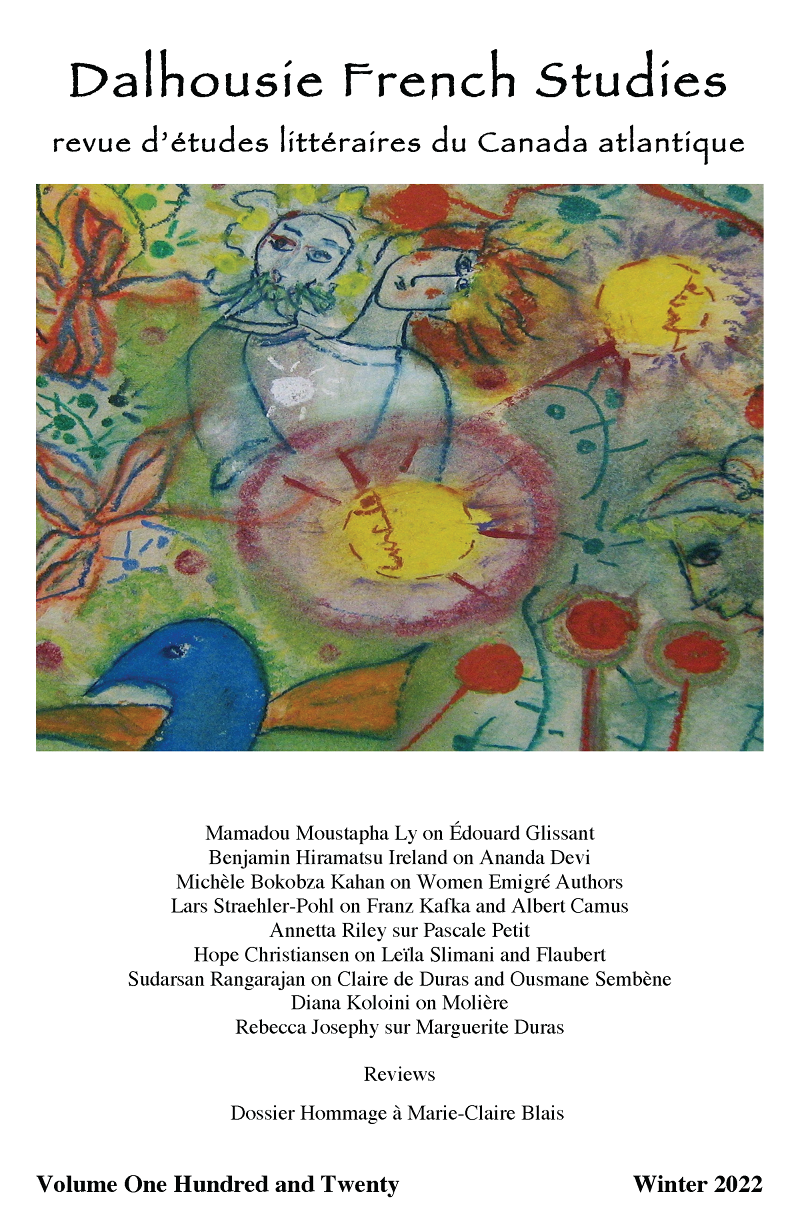Disillusionment and Death in Ourika and “La Noire de...”
Résumé
Cette étude propose de comparer Ourika de Claire de Duras (1824) et “La Noire de...” d‘Ousmane Sembène (1962). Les deux récits traitent de l‘assimilation d‘une Sénégalaise dans la société française. Ourika est une jeune femme élevée et éduquée dans un milieu aristocratique tandis que Diouana, le personnage principal du récit de Sembaine, qui travaille comme bonne, est illetrée. Mais cette différence entre les deux femmes disparaît au fur et à mesure que le racisme apparaît. Employant les théories de Fanon et de Bhabha, cette étude porte sur les aspects suivants: marchandisation et la perte de soi; stigmatisation et altérité; aliénation et la mort; et, voix supprimées et récits posthumes. En guise de conclusion, l‘étude discute des effets des épreuves des deux personnages principaux, par extension, sur les écrivains francophones africains dans le contexte postcolonial.
This study proposes to compare Claire de Duras‘s Ourika (1824) and Ousmane Sembène‘s “La Noire de...” (1962). The two novellas concern the assimilation of a Senegalese woman in the French society. Ourika is a young woman raised and educated in an aristocratic environment, while Diouana, the protagonist of Sembène‘s story, who works as a maid, is illiterate. But the difference between the two women disappears as racism emerges. Using Fanon and Bhabha, this study focuses on the following aspects: Commodification and the loss of self; stigmatization and the protagonist as the Other; alienation and death; and suppressed voices and posthumous narratives. The essay concludes with a discussion of the significance of the struggles of the two protagonists, by extension, for Francophone African writers in the postcolonial context.


